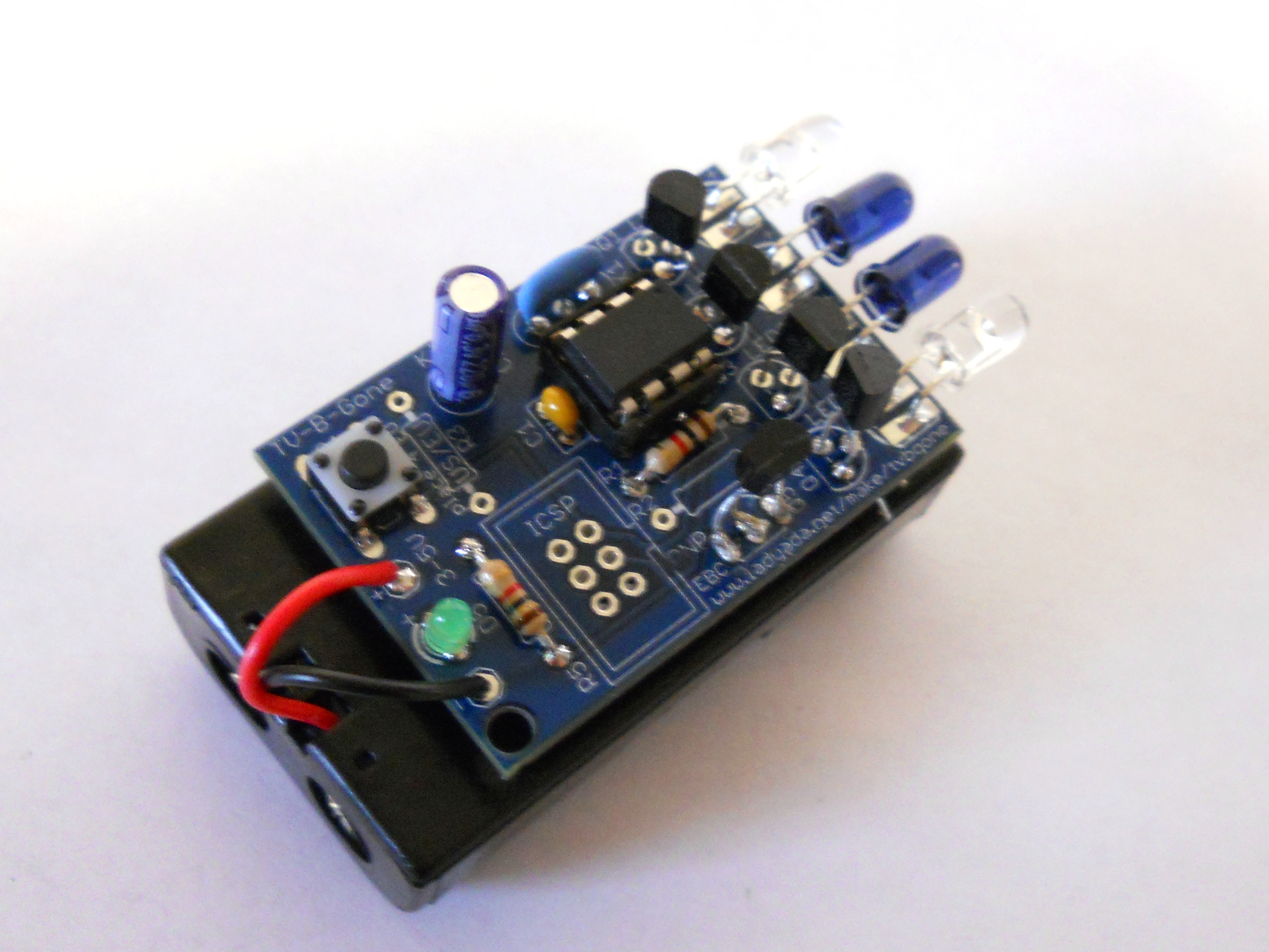Tired of all those LCD TVs everywhere? Want a break from advertisements while you’re trying to eat? Want to zap screens from across the street? The TV-B-Gone kit is just what you need. With just a simple click of the button you can turn off any TV from 100’s of feet away. Zap!
This project was originally published Dec. 18, 2012.


